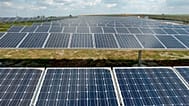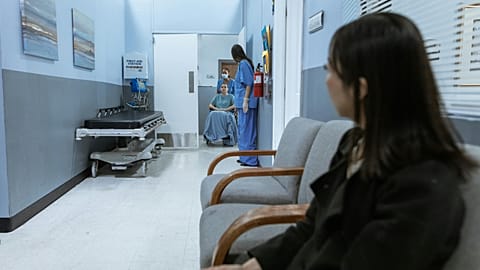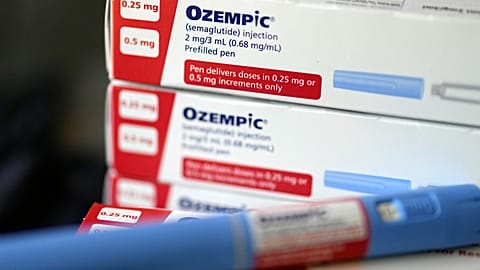Much like China, several European countries are seeing rising cases of mycoplasma pneumoniae, a bacterium that causes "walking pneumonia". How serious is it?
Several European countries have reported a rise in cases of pneumonia in children this year, similar to a rise in infections in China.
The infections are caused by mycoplasma pneumoniae, which is a bacterium that can cause mild respiratory infections to severe pneumonia.
It is a common cause of pneumonia in school-aged children, and according to Public Health France, can represent 30 to 50 per cent of community-acquired pneumonia infections in kids.
Pneumonia causes the lungs’ air sacs to become inflamed. They can fill with fluid or pus causing symptoms such as a cough or trouble breathing.
Six countries in the European Union or European Economic Area have so far reported increases in mycoplasma pneumoniae infections, which may reflect the normal recurrence of the bacteria.
It could also have been exacerbated by limited transmission during the COVID-19 pandemic, EU health officials said.
What are the symptoms?
Some countries, including Denmark and France, have classified the rise in cases as an "epidemic".
Hanne-Dorthe Emborg, a senior researcher at Denmark’s Statens Serum Institute, told Euronews Next that when more than 10 per cent of tests carried out by doctors are positive for mycoplasma, it’s considered an epidemic.
"It will be like influenza-like symptoms, but you usually have a lot of coughing," said Emborg.
"It is not a very quickly developing disease. It's usually slower and you can have a cough and you can be tired and have a headache and if that lasts for quite a long time then it can be mycoplasma pneumonia," she added.
It’s one of the main causes of "walking pneumonia," which is a mild form of infection where a person may be able to continue normal activities.
Researchers Mike Beeton and Patrick Meyer Sauteur began looking into surveillance of the bacterium mycoplasma pneumoniae back in 2020, finding that like other respiratory tract infections, cases started to disappear due to COVID-19 restrictions.
"Unsurprisingly, we saw that the mycoplasma pneumoniae detections across loads of different countries across the globe had very sharply dropped off," Beeton, a reader in medical microbiology at Cardiff Metropolitan University in the UK, told Euronews Next.
But as other common infections such as flu and respiratory syncytial virus (RSV) re-emerged, mycoplasma remained absent.
"We knew that at some point it was going to come back because there were still these occasional detections here and there across various different countries," he said.
Where is it spreading?
Co-coordinating international surveillance of the infection, they have found that in the last six months, they started to see the number of mycoplasma pneumoniae infections creep up.
Analysing surveillance data from 24 countries between April and September 2023, they found the incidences were higher in Europe and Asia. The "most frequent detections" in Europe were in Denmark, Sweden, Switzerland, and Wales, they added in an article published in the Lancet last month.
Several European countries have recently reported a rise in cases.
Denmark’s health officials said there was an increase in mycoplasma pneumoniae infections since the summer, with "significantly more cases than usual".
In France, "unusual increases" in mycoplasma pneumoniae respiratory infections were reported with increased circulation from the beginning of autumn and a higher number of cases compared to 2019 and 2022 "reflecting an epidemic situation".
The Netherlands also reported an increase in cases of pneumonia, with the public health institute RIVM telling Euronews Next that there has in particular been a rise in pneumonia infections among kids aged five to 14.
The institute has asked general practitioners to take extra throat and nose samples for testing.
Why are 'walking pneumonia' cases rising now?
It is unknown why these cases are rising right now, but some health officials say it could be attributed to a delay after the lifting of COVID-19 restrictions.
Beeton says there are a few theories as to why it took so long for this bacterium to reappear post-pandemic, including that it has a longer incubation period and that it’s "slow-growing".
While the magnitude of cases countries are seeing is “concerning,” he added, it’s not surprising.
Danish health officials say epidemics of mycoplasma pneumoniae have historically occurred roughly every four years, with the most recent epidemic from 2015-2018.
There was a high number of cases immediately before the COVID-19 pandemic, but they fell to an "unusually low level" amid restrictions.
"There was almost nothing circulating [during the pandemic], and then when we started to reopen [Denmark] at different levels, different viruses started to circulate again," said Emborg.
"But mycoplasma did not show up until now, so it's three and a half years since we've had a real circulation of the bacteria".
Emborg added: "There's a little bit more than we're used to, but we don't see it as a concern right now because mycoplasma is usually a disease that impacts children or schoolchildren. But they are usually not admitted to hospital".


















